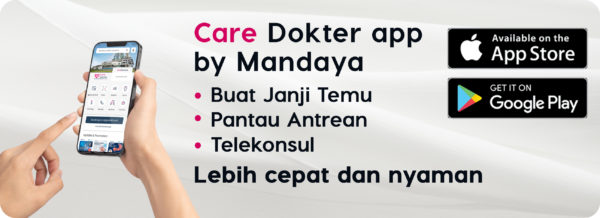Turbinates are narrow, elongated structures inside the nose that function to warm and humidify the air as it passes through the respiratory tract. Also known as nasal conchae, they play an important role in maintaining healthy breathing quality. However, when the turbinates become enlarged—a condition known as turbinate hypertrophy—they can obstruct airflow, cause breathing difficulties, lead to recurrent nasal infections, and even trigger nosebleeds.
Most people have three turbinates on each side of the nose: superior, middle, and inferior. Enlargement of the inferior and middle turbinates is the most common cause of turbinate hypertrophy. This condition can be managed through various treatment options, ranging from medical therapy to minimally invasive procedures such as Quantum Molecular Resonance (QMR), available at Mandaya Royal Hospital Puri.
This minimally invasive procedure offers many advantages: minimal pain, little to no bleeding, quick recovery, and in many cases, patients can go home on the same day of the procedure.
Contents
Symptoms of Turbinate Hypertrophy
Turbinate hypertrophy can make it difficult for a person to breathe through the nose. Other symptoms may include:
- Reduced or altered sense of smell
- Dry mouth upon waking due to mouth breathing
- Forehead pressure
- Mild facial pain
- Persistent nasal congestion
- Runny nose
- Snoring during sleep
The symptoms of turbinate hypertrophy often resemble those of a cold that doesn’t go away.
This condition is also commonly associated with a deviated septum—a condition where the cartilage separating the nostrils is crooked, obstructing airflow. While most people don’t have a perfectly straight septum, a significant deviation can block nasal passages and make breathing difficult.
To identify the cause, doctors may recommend imaging tests such as a CT scan to determine whether the symptoms are caused by turbinate hypertrophy, septal deviation, or both.
Causes of Turbinate Hypertrophy
Turbinate hypertrophy can be acute or chronic. The most common causes include:
- Chronic sinus inflammation
- Environmental irritants
- Seasonal allergies
These factors can cause the bones and soft tissue of the turbinates to swell. Many patients with turbinate hypertrophy also have a family history of allergic rhinitis, an inflammation of the nasal passages triggered by allergic reactions.
QMR Technology for Treating Turbinate Hypertrophy at Mandaya Royal Hospital Puri
Mandaya Royal Hospital Puri recently launched the Integrated Sinus and Snoring Treatment Center, featuring advanced medical technologies, including QMR for managing turbinate hypertrophy.
QMR (Quantum Molecular Resonance) is a modern technology used to reduce turbinate size without major surgery. It works by delivering high-frequency energy waves that selectively break molecular bonds in tissues without causing burns or thermal damage to surrounding areas.
In treating turbinate hypertrophy, QMR helps shrink the enlarged turbinate tissue (usually the inferior turbinate) so that nasal airflow can return to normal. The doctor inserts a QMR probe into the nasal cavity and directs the energy precisely to the hypertrophic area. This process is highly precise and minimally invasive.
Benefits of QMR Treatment:
- Minimal pain, as it does not damage surrounding tissues
- No burns or excessive bleeding
- Short procedure time, typically performed under local anesthesia
- Quick recovery, allowing patients to resume normal activities shortly after
- Long-lasting results, as the turbinate tissues shrink naturally without affecting their function
With QMR technology, treating turbinate hypertrophy becomes safer, more comfortable, and more efficient compared to conventional methods such as cauterization or open surgery.
QMR Procedure by dr. Abdillah Hasbi Assadyk, Sp.THT-KL
The QMR procedure at Mandaya Royal Hospital Puri is performed by dr. Abdillah Hasbi Assadyk, Sp.THT-KL, who completed advanced training at Centro Businco, Italy, under the guidance of renowned ENT specialist Prof. Lino Di Rienzo Businco. Prof. Lino has handled over 10,000 ENT cases throughout his career, making him one of the most experienced experts in minimally invasive ENT procedures.
QMR technology is one of the flagship services offered at the Integrated Sinus and Snoring Treatment Center at Mandaya Royal Hospital Puri. This innovation reflects the hospital’s commitment to providing modern, precise, and pain-minimized ENT care.
The service is led by dr. Abdillah, an experienced ENT specialist who underwent intensive training in Italy with Prof. Lino, an international ENT expert known for treating world-renowned figures such as singer Andrea Bocelli and football legend Francesco Totti.
With his global experience, dr. Abdillah brings world-class ENT standards to patients in Indonesia. His expertise, precision, and dedication make him the right choice for patients seeking modern treatments for sleep apnea, snoring, and other ENT conditions.
In addition to mastering QMR technology for turbinate hypertrophy, dr. Abdillah is also skilled in balloon sinuplasty for sinusitis and plasma coblation for tonsillitis. These three advanced techniques allow ENT procedures to be performed with minimal bleeding, quick recovery, and minimal discomfort—ensuring optimal outcomes and comfort for patients.
dr. Abdillah Hasbi Assadyk, Sp.THT-KL is available at Mandaya Royal Hospital Puri on:
- Monday: 08.00 – 12.00 & 16.00 – 20.00
- Tuesday: 08.00 – 12.00 & 16.00 – 20.00
- Wednesday: 08.00 – 12.00 & 16.00 – 20.00
- Thursday: 08.00 – 12.00 & 16.00 – 20.00
- Friday: 08.00 – 12.00 & 16.00 – 20.00
- Saturday: 08.00 – 20.00
To schedule a QMR procedure with dr. Abdillah at Mandaya Royal Hospital Puri, use the Chat via WhatsApp, Book Appointment, or Care Dokter App (available on Google Play and App Store) to simplify your visit, check queue numbers, and access complete service information.



